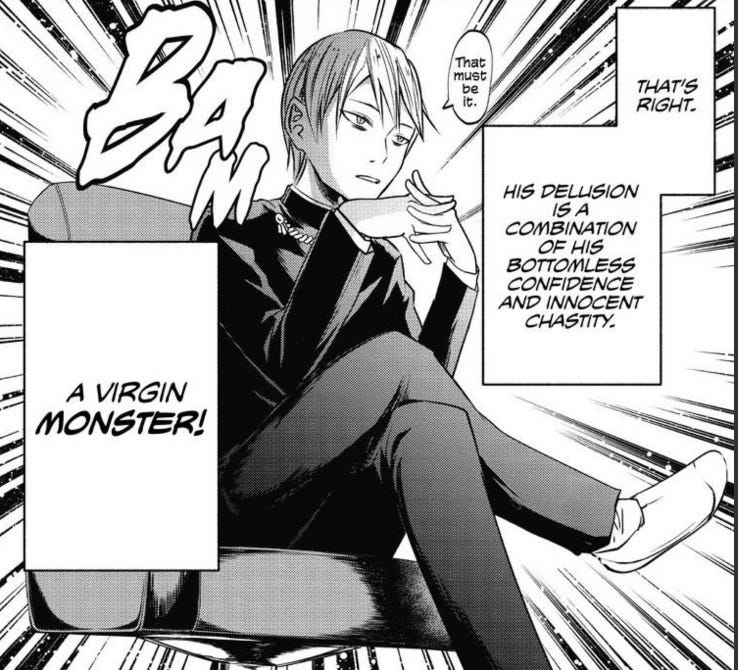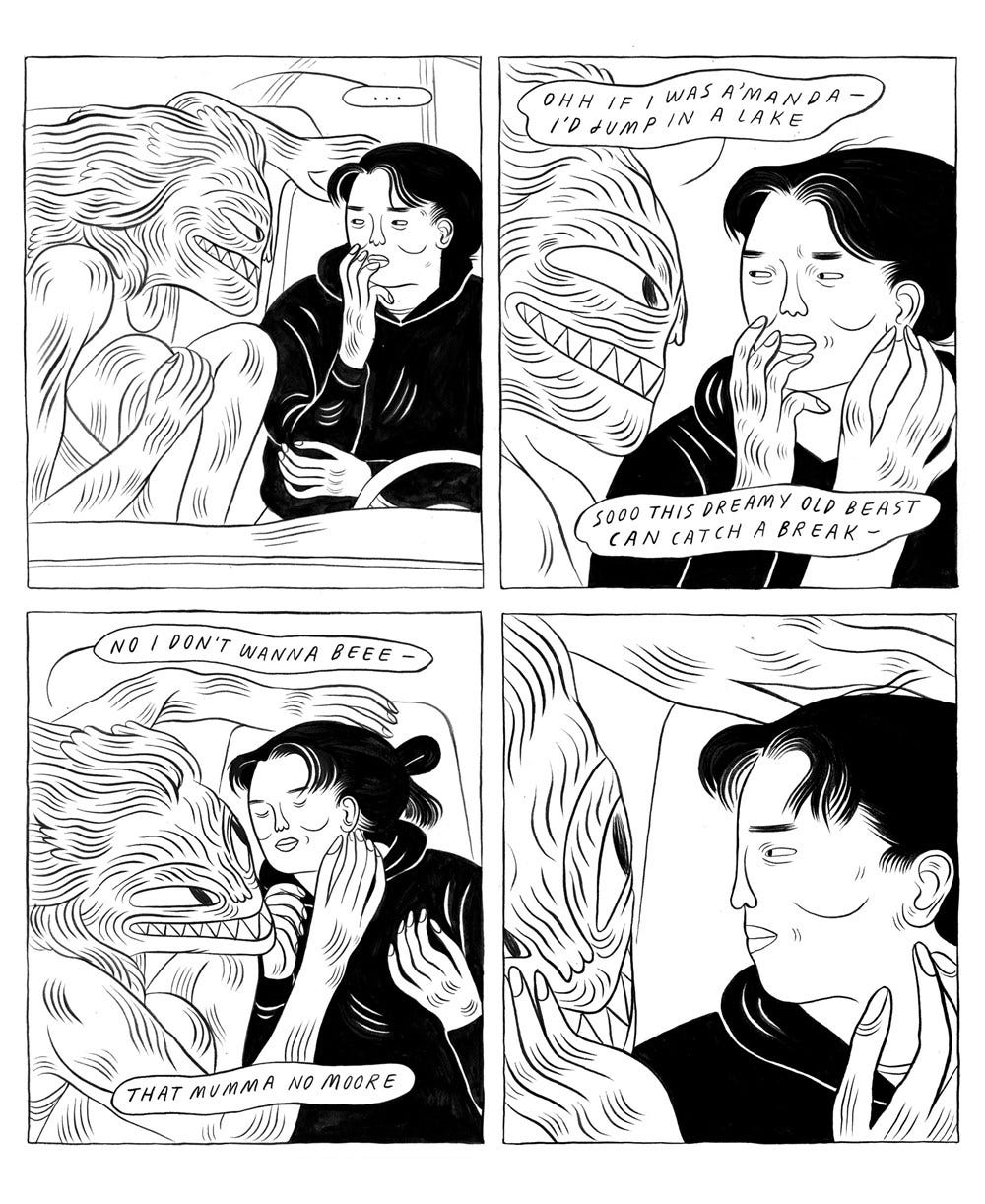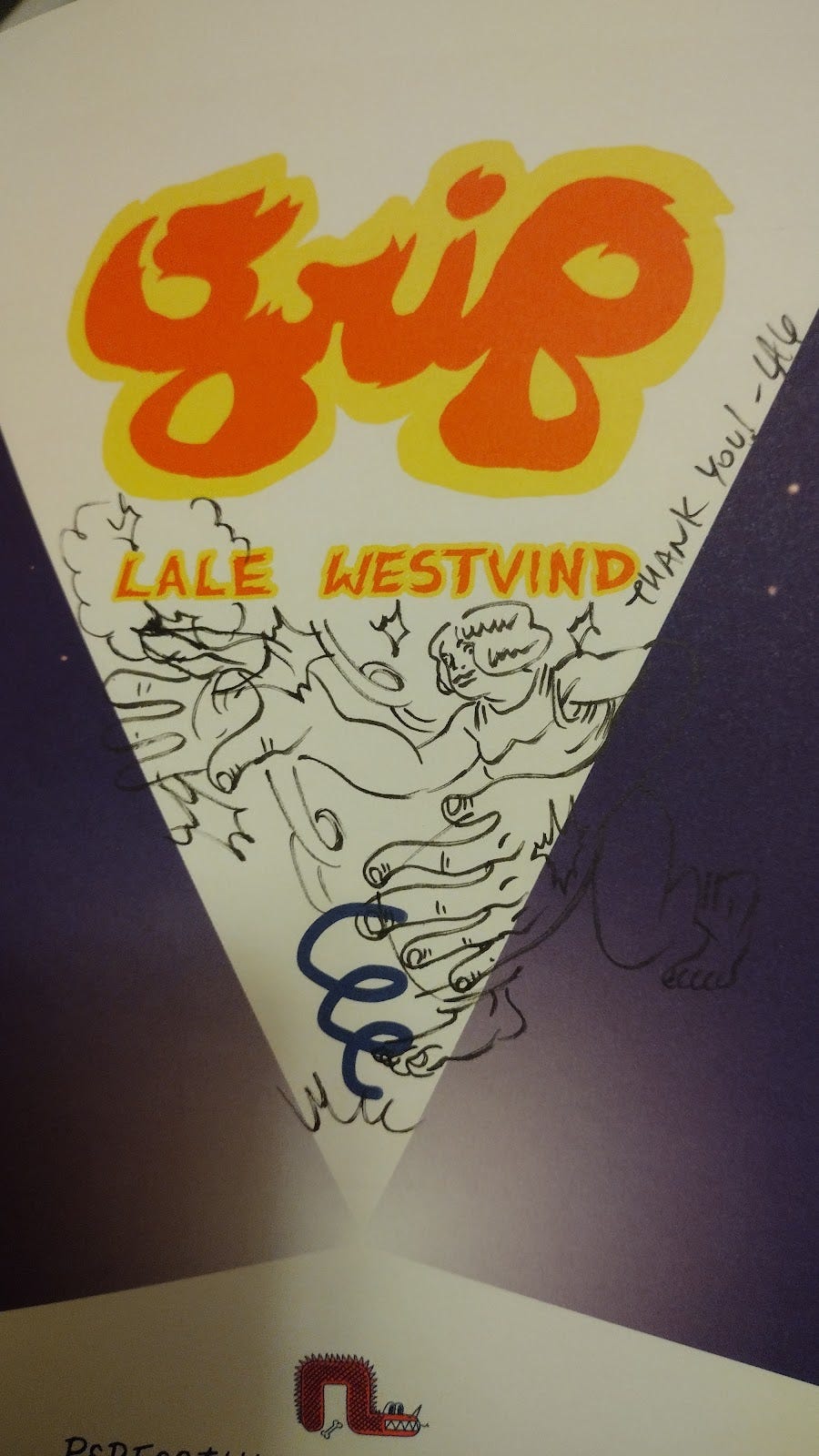Trash, art, and the mangas: Top ten comics of my year
Disintegrating relationships, the dignity of work, free-thinking 1970s feminism–aww yeah
MANGA
1. Tatsuki Fujimoto: Goodbye, Eri/Chainsaw Man (tr. Amanda Haley)
Going meta to ponder What It All Means that modern people refract all their experiences through their popular media consumption has been a thing since there was a “modern.” But now that your average Yu or Yuta with an iPhone has an unprecedented ability to make their own semipopular media, What Does That All Mean? For art, of course; life, unlike death, is downstream from that. In Goodbye Eri, Fujimoto presents the very trash-art-and-the-movies argument that the structural understanding of narrative you get from reading Siegfried Kracauer or TV Tropes isn’t enough for the artist, who instead of additionally needs to watch three bad flicks a day with a vampire lady friend, even if their reaction doesn’t initially go beyond saying “aww yeah” every time they see a nipple. And he pushes back against the fashionable 2020s wisdom that art about one’s trauma can push the creator back to long-haul normalcy. Sure, it works sometimes, but it’s impossible to completely insulate oneself from re-traumatizing events, and above that, artists are disproportionately fjucked up people. Whether this is because being a fjuck-up boosts creativity or because dedication to art messes people up is left ambiguous.
Meanwhile, in Chainsaw Man:
(yes I know I’ve posted this image before, and I will post it again)
2. Tatsuya Endo: Spy x Family (tr. Casey Loe)
Dad’s a spy! Mom’s an assassin! Daughter Anya’s a telepath! What more do you want, a precognitive dog? One of the funniest manga series of the last decade-plus (numbers 1b and 3 on this list are its main rivals), especially in the school scenes where Anya and her frenemies get to bring out their full range of facial expressions.
In comparison, the action arcs are normie, though the intrigue and ridiculous disguises are highly enjoyable. We should still have a good five years before the Iron Law of Shonen (every series with so much as a punch eventually becomes fight-fight-fight) kicks in.
3. Aka Akasaka: Kaguya-sama: Love Is War (tr. Emi Louie-Nishikawa & Tomoko Kimura)
Romcom about how even very smart people act very dumb when they are in high school and in love, and also much of the rest of the time.
It's most quick-witted early on when it focuses on the triangle of student council President Shirogane, Vice-President Kaguya, and chaos agent Fujiwara and their day-to-day hijinks, but it manages to prolong the magic once it becomes more narrative-focused. On the way we get just about the only successful will-they-won’t-they-okay-but-how-will-they relationship in the medium and Chika eating unholy amounts of ramen.
4. Taiyo Matsumoto: Ping Pong (tr. Michael Arias)
Matsumoto created this lightning-paced by genre standards—it’s five tankobon and done—saga of two years of high school table tennis rivalries well before Sunny (one of my favorite comics of the 2010s), but it wasn’t available in English until a couple of years ago. His idiosyncratic style makes the action feel sweatier, the uniforms more rumpled than in most sports mangas. But it’s the contrast between typical shonen character Peco and the often inscrutable Smile that makes this a classic. Even after the tournaments are over, we’re not sure who the protagonist was, or whether he learned anything at all
5. Koyoharu Gotouge: Demon Slayer: Kimetsu no Yaiba (tr. John Werry)
Once the “Hinokami” episode of the anime came out, this became a national multimedia phenomenon in Japan on a scale not observed in the U.S. since maybe Star Wars—like if there’d been a Game of Thrones movie that had become the year’s biggest, or if anybody including Marvel cared about Marvel TV series. On the page, the initial eye-catching contrast is between the chibi character art style and the extreme head-lopping violence. The heart of it, however, is pathos, which comics and cartoons can do less soggily than any other medium (the violence helps, as do the occasional dumb jokes.) The demons have their tragic backstories, and every being fighting for their life just wants some sense of family, or failing that, some way of creating beauty. Once the Iron Law kicks in, the series becomes a bit wearying, though I did like how it undermined the expectations it had set up earlier. Sometimes demons are just assholes.
Honotable mention: Holy shit, Togashi finally gave us the Phantom Troupe’s backstory in Hunter X Hunter. We may get off this cruise ship yet.
NOT MANGA
1. Lee Lai: Stone Fruit
Middlebrow comics are going through a rough patch at the moment—in an overreaction to the admittedly played-out “I’m a horny white man and I’m a terrible person” era, a lot of work reads and even looks like Very Special sitcom episodes. Bucking this trend is Lai’s sharp and imaginative sketch of a lesbian couple experiencing their relationship slowly or not so slowly falling apart. They’re neither bad nor gratuitously good people—things are just not working like they used to, and there’s a kid (not theirs) caught in the crossfire. Lai’s figures aren’t idealized but are still attractive, and the sparing use of symbolic non-realism is extremely expressive. Sad, funny, hopeful.
2. Lale Westvind: Grip
Yes yes the body is a horror and all that but have you also considered that it is awesome. The unnamed pink main character has hands that can do anything: wait tables, fix an airplane mid-flight, build a sweet-ass ride. Westvind’s visual imagination is boundless, and her grip on non-verbal narrative keeps things intriguing even when it’s just the character alone in the wilderness indulging in acts of pure creation. An old school celebration of capability and of the dignity of work, its 2019 publication anticipated the current year of the hot dog finger.
3. Shary Flenniken: Trots and Bonnie
NYRB reprint of the long-running National Lampoon feature detailing the ribald adventures of the oversexed eighth graders Bonnie and Pepsi and Bonnie’s oversexed smart-assed dog, drawn in the style of a Hearst newspaper Sunday strip. In the ’70s comics, you can see Flenniken struggling to pair the new openness towards portraying sex with openness in talking about feminist topics; guess which one the Lampoon’s brains trust pushed back against more. By the ’80s free-thinking has been soundly defeated, yet Bonnie and Pepsi continue to carve out ideological space while trying to make a buck like everyone else.
4. Mat Brinkman: Teratoid Heights
The signature artwork of Rhode Island’s Fort Thunder scene, one of avant-comix’s (and noise rock’s) major movements of the early 2000s, re-released in 2018 in a “Museum Edition” which mostly means I paid thirty-one American dollars for it (in person at Chicago zine shop Quimby’s, whose collection is as good as reputed.) And the great parts, mostly meaning the three long pieces up front, really are great. We watch weird creatures move weirdly, and gradually some kind of narrative emerges organically like it sometimes does in a Herzog nature documentary, if Herzog was extremely high. Will Headless Creatures 1, 2, and 3 in “Flapstack” achieve their goal or die horribly trying? What is their goal? Is dying horribly part of it? Will you care once you turn past the last page, and why or why not? What is that lump in the distance is that what I think it is make it stop make it stop
5. James Tynion IV, Jorge Jiménez et al.: Batman: Their Dark Designs/The Joker War
A return to kiss-kiss bang-bang trauma-trauma Batman, though it’s interesting that a back-to-basics Bat-title has so much Nolan in it. It’s consistently entertaining, especially in the Joker-Penguin-Riddler-Catwoman interactions and in finding the first good use for Harley Quinn since Dini and Timm. It does seem like it goes to a lot of trouble to set up an opportunity to be deep then ends up settling for being clever, which might be the most Nolanesque thing about it.
Honorable mention: Sophia Foster-Dimino’s “On Show Now” in Ex.Mag Vol. 01.
Next time: Favorite non-comic books in an unprecedented midweek post. Must be Listmas!








